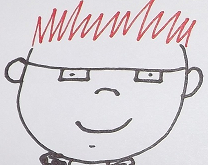Whew! Somewhere in the midst of all the hustle and bustle of this time of year, congregants are expected to find a way to undergo a tiny bit of what Jesus experienced. Sometimes we get lost in all the duties and expectations and don't take the time to feel what all the services are supposed to allow us to feel.

The Seder Meal that we celebrate every other year at MCC Lubbock is of particular significance to me. We break the matzah, the unleavened bread of bondage. Just as the Israelites were in servitude to the Pharaoh, we continued to be bound by ignorance, oppression, and fear. The bitter herbs or maror are eaten to symbolize the bitterness of slavery. We must acknowledge that as long as we prosper off of those who cannot escape poverty we are chained to our society just as the Israelites were chained to Egypt. We eat baitzah, a hard-cooked egg, that represents the cycle of birth and death. For me as a Christian the baitzah reminds me that due to Christ's death and resurrection, I have been given the gift of rebirth. The haroseth, which is made of chopped apples, nuts, and wine, signifies the mortar used with the bricks the Israelites made while enslaved by Pharaoh. The sweetness of the haroseth suggests the taste of freedom that comes to me through God's grace. Karpas, parsley or other greens, are eaten as a reminder of new growth that comes each spring. Finally four cups of wine are drunk at various parts of the meal.
Long ago, Jesus shared a similar meal in a borrowed room with his twelve disciples. He ate this symbolic meal as he prepared to be crucified. He was the lamb that was given as a sacrifice for the sins of all people. He went willingly knowing that his pain was necessary to demonstrate the grace that God offered and continues to offer. AND he knew that these events were not going to be an ending, but a beginning.
This year, will you take the time to remember the sacrifices that God made over two centuries ago? Will you stop in the craziness of eggs and chocolate and special dinners to commemorate the joy that this season represents? Like Mary Magdalene at the tomb, will you cry out to the world, "I have seen the Lord"?

No comments:
Post a Comment